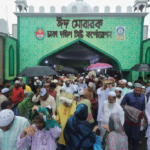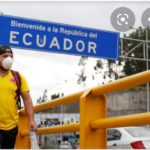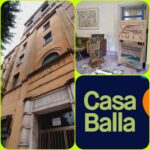I give a fast look at the world map, pinpoints everywhere but the most dotted is Asia…
I realize that once a year, an airplane has always zoomed me there without realizing that I have visited most of the countries, I look closely, only one is missing… Bhutan!
Yes, a place that unfortunately, nowadays has become so instagrammable and fashionable, in fact the publishing house Lonely Planet has awarded the first prize 2020 for best travel to Bhutan.
Sometimes it’s difficult to find a travel buddy, I have accomplished that my trips are off the normal traveler’s beaten track (not for long though) ergo – during the years – since travelling has become so mainstream due to the social networks, every place is reachable, touchable, storyable aka instagrammable, I have detached from this dictat and created my way of exploring.
One decides to visit some countries during the low season, to explore unknown lands and parts that still haven’t been raped, namely exploited.
We already know who the fault belongs to: we can call it globalization, turbo-capitalism, turbo-materialism, homologation, but first of all everything began with colonization…
Colonialism is a forced social change of every single country that has been mutilated of its identity.
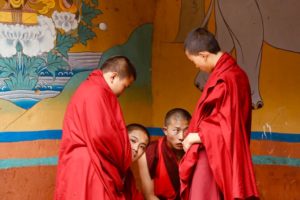
It has become one globalized world, to my astonishment, to find an espresso in a place so far, hidden and impossible to reach wasn’t so difficult.
The speediness of the transportation has pulverized the planetary distances. International connections are faster and economic, it’s the effect of globalization, the process of economic social and cultural integration between the world’s countries.
With a click of, the mouse, or with the touch of a finger on the screen, we can interact with anyone and buy anything. With internet, the online commerce has developed colossally, everything managed by the monsters of the ecommerce like Amazon and Ebay. Internet and the TV channels have transformed our planet in a “global village”.
A small, landlocked country nestled deep in the Himalayas between India and China, Bhutan is characterized by steep mountains and deep valleys, which led to scattered population settlement patterns. The country is famous for its unique philosophy – Gross National Happiness (GNH) – which guides its development.
Almost completely cut off for centuries, it has tried to let in some aspects of the outside world while fiercely guarding its ancient traditions.
The Bhutanese name for Bhutan, Druk Yul, means “Land of the Thunder Dragon” and it only began to open up to outsiders in the 1970s.
The Wangchuck hereditary monarchy has wielded power since 1907. But Bhutan became a two-party parliamentary democracy after elections in March 2008.
Limited tourism, closely controlled by the government, began to develop in Bhutan in the mid-1970s. In the early 1990s, however, the tourism industry was privatized, and since that time the volume of tourists, tourist facilities, and tourist income increased monumentally. In the early 21st century there remained a government-imposed daily tourist tariff (250$ x day) to ensure significant tourist input into the economy.
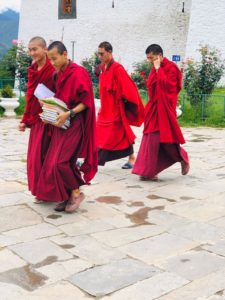
One could say that the price is very high, but this sort of organization keeps all of the uninterested social travelers away and attracts the ones that are profoundly captured by this amazing land.
Bhutan is (in my mind) the perfect example of “how to cope” with global tourism in Asia.
Yet here we are on plane that will take us to Delhi (India for the 10th time) and then to Paro.
As soon as we landed, we noticed the difference between India and Bhutan, so close but so different, a breathing oxymoron. Me and my friend Alexandra were speechless. Everything was clean, only one who has travelled through these countries and mountains can understand our astonishment when I say, not a plastic bottle on the streets…
Our Sherpa was waiting for us, wearing his typical skirt, similar to the Scottish ones, but this was orange, yellow, green, red and pink.
Bhutan is the only place in the world that has Buddhism as its state religion – says the guide – and off we go for another of our adventures!
From there we started to visit all of the dzongs and stupas around the country like narcotics, met thousands of monks, what captured my attention was the difference one can touch from our Western world.
We felt like foreign particles.
For us, these were expeditions of discovery.
Yes, this land is still surviving without globalization, the law of opposites is still alive, not like India and Nepal that have bowed down to this great God called Dollar. This place, on which I’m stepping on now has remained crystal clear, this is what I’m thinking while we are walking at 3400 meters of altitude (no joke) with our Sherpa, and out of the blue he says:
“It’s raining let’s hope to meet no tigers!”
I asked skeptically: “Tigers?”
Sherpa: “Yes there are a lot of tigers around here.”
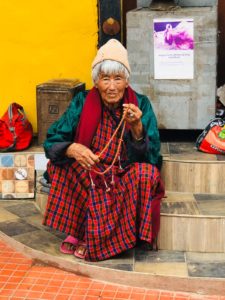
Thankfully we reached the car without meeting one, and headed to the most overwhelming monastery that I had seen in my entire life, ab absurdo, better than the Taj Mahal or Chichén Itzá…
The Gangtey Monastery, generally known as Gangtey Goenpa or Gangtey Monastery, is an important monastery of Nyingmapa school of Buddhism, the main seat of the Pema Lingpa tradition. It is located in the Wangdue Phodrang District, in the western part of Bhutan.
Situated atop a hill at an altitude of 3400 m, Gangtey Monastery (also known as Gangtey Sanga Choeling Goemba) offers a stunning view of Phobjikha valley. This venerable monastery was founded in 1613 by Je Kuenga Gyaltshen.
Chronicle: 26 of July 2019, low, low, low season, raining heavily the whole day, loads of kilometers to get there, we get out of the car, wrap ourselves around two rain jackets, start walking in this little village made of 10 houses, at 3400 meters of altitude.
I can still hear the same sound I heard a couple of months ago, OOOOMMMM. The monks were meditating and from all of the windows you could hear that strong sound calling, OM… Sherpa told us that there are two types of monks: the ones that have no money (namely obliged to enter the monastery) and the ones that feel the calling…
We gazed at many that had received this gift, delighted to live there, to pray the whole day and to study, some were playing with the cats but others were reading.
Buddhists believe in reincarnations and here in Bhutan it is thought that one has two spirits, one sitting on a shoulder and one on another, they are the ones that will define and judge your actions throughout all your entire life.
We started walking and taking some pictures (always with respect) and we noticed that half the monastery had been destroyed by the earthquake, but there were little kids living inside these tiny houses.
Inside Gantey, all of the walls were colored and the paintings were mind-blowing, there was no light because the thunderstorm of the day before had blustered away the electricity, but to our astonishment we saw 30 little monks sitting in the dark listening to their Guru. He was explaining the parable about the good and evil.
He was the only one that had power, using the torch to read and to explain.
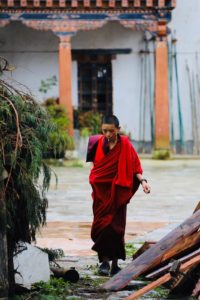
After many weeks of twist and turns, my small heart did not beat noiseless that day, it was literally exploding inside my chest.
We were there, up above the clouds, with monks all dressed in orange and red singing and praying; I had accomplished one of my dreams, getting there, not an easy thing to achieve for a common traveler.
The day was dying, Sherpa said we had to leave, the road we had to traverse now was highly dangerous due to the continuous landslides that the day before on that street had killed two people. Rain was pouring down, soaking wet, Alexandra who had travelled more than me, was smiling, I guess she was thinking more or less the same things I was.
And out of the blue this flash back rolls in:
She thought about the first time she met that girl.
She was sitting on a wall all dressed in blue.
An oxymoron in that huge American School.
It was her first day in that new microcosm and Alexandra immediately went to greet her.
From that moment the fil rouge grew thicker and thicker.
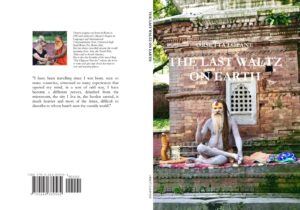
Alexandra was special, she was always nice to people and brilliant with her friends.
That little girl was forced to grow up very early, and while it was happening also the hurricane inside her soul was evolving.
Every little thing she did was magic, it seemed as though she sowed with a silver string every problem.
If something got broken, she would fix it with that golden glowing glue similar to the one used by the Japanese.
She remembered the day, where she cleaned that boat full of blood, without saying a word, helping her…
And now it was such an emotion to travel with her and share some pieces of life together, a puzzle which had started 26 years ago…
With sadness we start walking backwards out of the monastery, we didn’t want to miss a thing, in fact there he comes, passes in front of us, the most beautiful monk of all, strolling under the rain wearing a pair of black crocs, a red kesa and a chupa chups in his mouth, the perfect blend of globalization my eyes will ever see and witness in their entire life.
On the extreme peak of that mountain, he was the real traveler, except his journey was inward…

